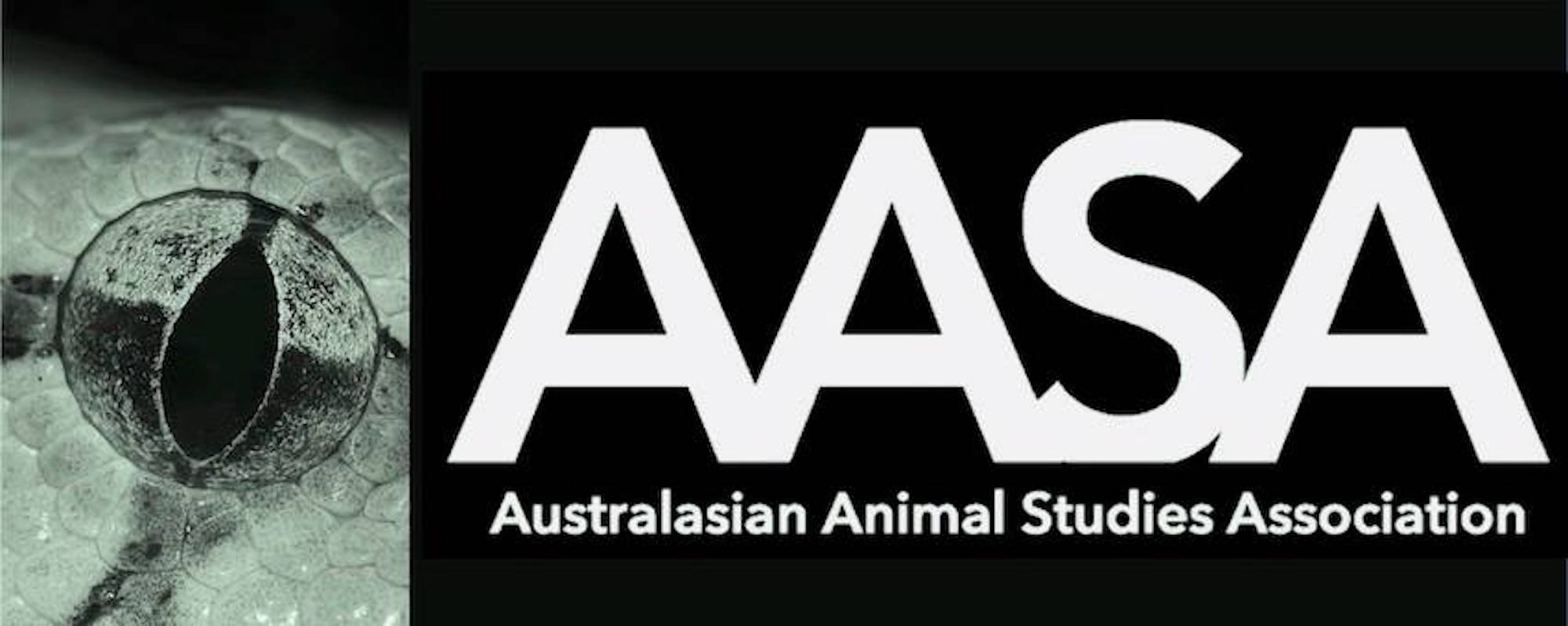Inside the Grass Library
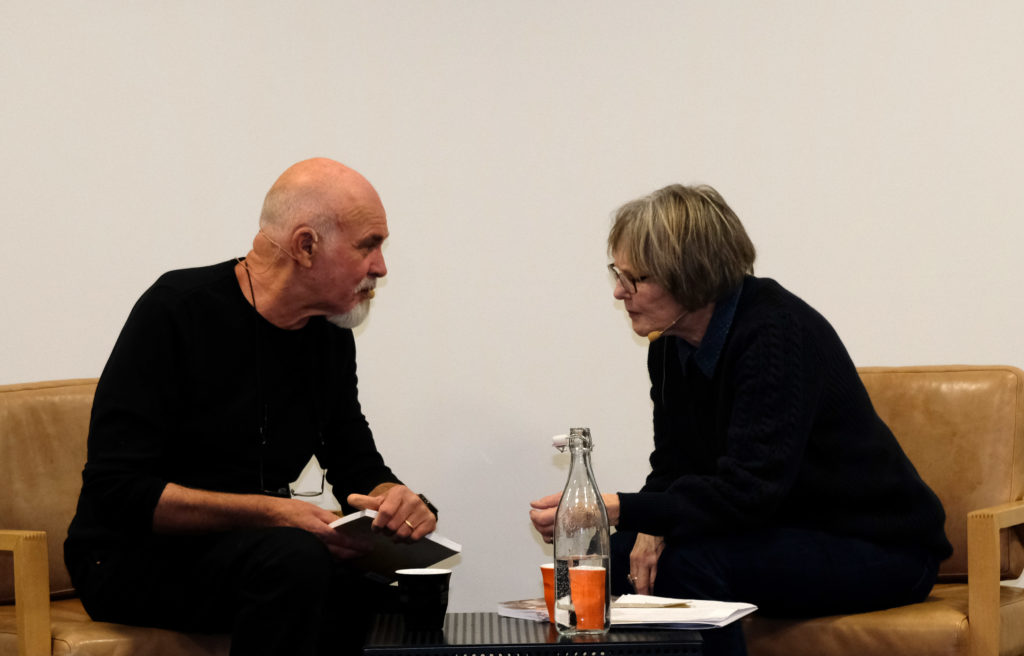
David Brooks with Christine Townend, Blue Mountains Writers Festival, August 2019
David Brooks’s new book, The Grass Library (Brandl & Schlesinger) was released in early August 2019. The publishers describe the book as ‘a philosophical and poetic journey that recounts the author’s relationship with his four sheep and other animals in his home in the Blue Mountains. It is both a memoir and an elegy for animal rights’. Jeffrey Moussaieff Masson, author of Final Analysis, When Elephants Weep, The Pig Who Sang to the Moon and many other best-selling works on animals, has said ‘The Grass Library is one of the most beautifully written books about animals I have ever read. I know of nothing else like it published in this or any other country. It is deep, sensitive, charming, instructive and above all, humble. I cannot imagine anyone reading it without coming away in some profound sense altered.’
On August 24th, in a session at the inaugural Blue Mountains Writers Festival, David Brooks answered questions presented to him by Christine Townend, OAM, herself an author, painter, activist, founder of Animal Liberation and cofounder (with Peter Singer) of Animals Australia.
You’ve written critically acclaimed poetry, novels and short stories and received awards and short-listings for them. You’ve even written a major work on literary hoaxes, but you now write extensively and almost exclusively about animals. How has this come about, and what effect do you feel this turn has had upon your career as a writer?
I could say, facetiously, that it’s been a bit like committing literary suicide. In some ways it does seem like that. There are places that have reviewed pretty much everything I’ve written, but, suddenly, now that the subject is animals, it’s as if the books slip under the radar. It’s similar with publishing houses. Editors may love the books, and one might even receive glowing responses from publishers themselves, but animals and animal matters are seen as a niche market, if they’re seen as any market at all, and the bean counters, the publishers’ marketing people, say a rather emphatic No. But I think a more positive and more accurate take on this is that one’s moved out of one network and hasn’t yet managed to create or place oneself in another. Eventually I might manage to do this. I might even carry over readers from the first into the second. The core issue here is that animals are, in this and so many other ways, still a kind of cultural blind spot, and that the very difficulties I encounter are evidence of how much this work needs to be done. It may be hard to make progress in this new place, but on the positive side any progress one can make is progress. To write for oneself is one thing – to write for oneself, and to service one’s reputation, etc. – but it is also deeply compromised, and to write with a mission, to write for someone else, is, I am finding, very liberating. And of course I don’t have to totally abandon that first world to enter this second. If I get an idea for a poem, an idea I like, even if that idea has nothing directly to do with animals, then I’m not going to refuse to write it. The same goes for a story, or an essay. But so much of my mind and my daily life is now to do with animals that most of the things I find I now want to write about are also to do with them. Now, when I look back on my decades writing for myself (or – for writers do tend to have this fantastical illusion – for literature), I see them, instead, as training for this main event.
What is a ‘grass library’? What do you mean by that title?
There are three things I could offer here. The first is a scene, a corner of a scene, in Patrick White’s Voss, when the explorer Voss and his party stop over – it is their last contact with civilisation (if you can call it that) – at a station called ‘Jildra’, where the station owner ‘had torn the boards off Homer to chock the leg of the table, and such other books as he had inherited, or even bought in idealistic youth, now provided material for spills, or could hope at best to be ignored, except by insects, dust, and mould,’ as if the books have come to a place where they’ve lost their relevance, been judged and found somehow wanting, by the land itself.
The second is a scene from my own early life that I recount in chapter 6 of The Grass Library. It must be 1971 or 1972. Some friends are house-sitting on a station just outside Canberra. I go there for a party and at some point one of my hosts takes me out to see a library in what seemed to me at the time to be a converted woolshed. In this library was an extraordinary collection of very rare editions of many of the great works of English literature. There was even a second folio – I think it was the second folio – of Shakespeare, along with numerous first editions of modern works by Pound, Eliot, Yeats, Beckett, etc. ‘The riches of literature,’ as I write in the book,
brought to a galvanised-iron shed, on the edge of Australian paddocks – the ghosts of sheep wandering through it, living sheep grazing about it – as if to a resting-place, or there were some accounting, some reconciliation to be done there, some validation (or rejection), through the scrutiny of grass.
My third point is that that is pretty much what I’ve done with my own library. Thirty-five years teaching literature, mainly Australian, and then taking it, holus bolus, to a galvanised shed in a paddock in the upper mountains, where all that it has meant to me in the past – that whole life – seems to be being tested, evaluated somehow, by my life with the dogs, the sheep, the birds, the rats, the reptiles, the forest, in the faces of whom a lot of it is, yes, found wanting.
What is it that’s been wanted, do you think?
All that thinking and teaching was about human sensibility, about what is important in human lives, about the human purposes of things, and here I was, oblivious to such intense, non-human suffering all around me, taking my part, every day, in what I now see as a hideous, perpetual massacre. It takes a lot of thinking to work out how one has, how we have, gotten into such a place – it’s like a cancer in our minds, our culture – and how we might begin to get out of it.
But that’s too huge. Maybe the question can be approached differently. Maybe one can simply say that what’s been wanting is a kind of attention, a mind-full-ness toward non-human beings, and the kind of knowledge that that can give you. Amidst all my knowing I just didn’t know.
Would you introduce your animals to us – your dog, your sheep? Their names and personalities? How they came to you?
I said dogs, plural, just now, by which I meant only that a lot of dogs come to visit us, one way or another, though in fact there is only one dog, Charlie, a fox terrier cross, who’s kind of the foreman of the place, very benign and a bit elderly (now almost sixteen), deaf, short-sighted, with a gammy leg. He came to us via a dog-rescue place that had saved him from death row at a pound. The book, as I explain in the opening chapters, began in an attempt to write his biography, and my thinking about all the problems that involves. And then there are four sheep, two of whom, Henry and Jonathan, a ram and a weather, came to us as one- or two-year-olds, having eaten their way in to a house in the mid-mountains through a huge cotoneaster hedge, to meet the ewes on the other side, and then, with those ewes, had almost eaten their hosts out of house and home. Then there is Orpheus Pumpkin, who came to us as a ten-day-old orphaned lamb, and whom we hand-raised. He’s now six years old and the other two are eight. And then, last but hardly least, there is Jason, a black sheep – in fact just very brown – who came a couple of years later, his feet rotten from living too long in a swampy brickyard down east of the mountains. We intended to keep him only as long as it took to heal his feet, but we found it impossible to let him go. And then, of course, there’s a whole flock of wild wood ducks that has adopted the place, and many other creatures besides. I could tell you some of their stories, and about their personalities, but of course that’s what a lot of the book is about.
Is there something special about your sheep?
Well, I think there are a lot of things that are special about the sheep who live with me, of course, but a great many people would say that about those who live with them. The one thing that makes them special that I am very certain of, however, is perhaps behind my ability to see those other things in the first place. They are special because they are alive, by which I mean that most sheep in this country, and probably most other countries, are dead before they are two or three years old, indeed a great many are dead – have been slaughtered – before they reach the age of one. That is, they have been slaughtered – shall I say murdered? is that ‘too dramatic’? because that is what I mean – while still children, and a great many while still in their infancy. Before they have had any real chance to mature intellectually, to mature emotionally – even, I suspect, before they have had any real chance to learn much about being sheep at all. What is special about these sheep is that they are still alive, that they have developed in these ways – and, of course, that their personalities have had a chance to emerge.
There are various stereotypes of sheep character and behaviour – we have the word ‘sheepish’, for example, and they have a reputation for following. Do you have any reflections on that?
To be sheep-like could mean many things, a number of them quite impressive indeed, and not many of them at all corresponding to what humans mean when they use the word sheepish. Amongst other things it’s a total failure to see the world from a sheep’s point of view. Most sheep in a mob will have experienced only discomfort or outright pain when it comes to human hands: they will have had their tails docked, they may have been mulesed (had the skin physically cut from around their anus); the males, most of them, will have been castrated, had the buds of their horns cauterised (i.e. seared off); and they will all have been drenched, dipped, shorn. They’ll have had their families and their social structures ripped apart. They’ll have had their children taken away from them. What I mean to say is that, for most sheep, humans equal pain, humans equal danger. Who’s to say that, when a mob of sheep, cornered in a paddock, are approached by a human, with dog, they have made a group decision – have long decided – to be tractable, to do anything to stay away from those hands, those jaws?
It’s also said that sheep don’t feel pain. At least, not like we humans do. Whereas I think sheep find what is done to them physically, or the accidents that happen to them, just as excruciating as a human might. But sheep are prey animals, and a great deal of their behaviour stems from this. If they are attacked, they will remain silent so as not to draw the attention of the herd to them and so, potentially, draw other sheep into danger. A sheep lying injured, more or less silent, or remaining more or less silent while it is savaged, could be seen as sheepish, but it could also be seen as incredibly stoic, incredibly brave. One could go up to a human lying in an emergency ward moaning and groaning with a broken leg or whatever – or a soccer player just tripped – and say to them, Come on, be more like a sheep.
There are so many more things that I could say. Sheep are matriarchal, which has led to an interesting situation with our four who are all male. They’re keenly aware of each other’s location, and tend to panic if they’ve wandered off day-dreaming and realised, suddenly, that they don’t know where the others are. They will ostracise a member of the group if that member is in a bad mood. They will intervene if a butting competition becomes too aggressive. Their sense of a joust is almost courtly, almost medieval. They are incredibly curious, and very inventive (they’ve recently worked out how to turn the doorknob to my writing room, for example, and can now let themselves in). But, again, I touch upon many of these things in the book.
You have a chapter in your book called ‘Postmodern Animals’. What do you mean by that?
Leaving aside that one can barely imagine a non-human being, even in the remotest wilderness, that has not been inflected, curved in some measure by human being – the Anthropocene – I am thinking there mainly of the animals we have ‘domesticated’, which is to say instrumentalised, for our human use, which in most cases is to say slaughter and consumption. How does an animal survive, get on with its life, if it manages – as we might say ‘rescued’ animals, animals in refuges, sanctuaries – to escape this slaughter, this instrumentalisation? How does a sheep – but in a way you can substitute pig, cow, steer, duck, chicken, goat, etc. – know what it is to be a sheep when its culture and its ties to others are decimated, when it’s (but it is not an ‘it’, ‘it’ is a he or a she) separated so early from the mother, siblings, probably never has any idea of the father? Where are the elders of their tribe, those who might hand down the lore and traditions? If he/she manages to survive to adulthood, who can teach them how to be in that adulthood? What I see in the sheep who live with me – the sheep, the dog, the ducks – is a group of creatures learning from each other (sheep from dog, dog from sheep, sheep from humans, ducks from dog, ducks from humans, ducks from sheep), putting themselves together, as it were, from found materials, with only the most limited and personal history, the most limited and local and personal tradition – a process that theorists of the postmodern refer to as bricolage. I don’t want to go into further details now – some of them are fairly obvious – but I infer, from this, the condition of a great many animals in our time.
What have you learnt about sheep – or dogs or ducks or rats for that matter – that is different from what you understood before?
Just about everything. That is, I hardly knew anything about them before this new phase in my being. Earlier, in my previous and relatively ignorant life, I think I had just accepted what my culture told me about them. What I had read about them. What I had heard about them. If ever I watched them, as doubtless I did sometimes do, it was through those filters. Now I understand that the textual sheep, the rumoured duck, may not be very much like the real sheep, the real duck at all, a reflection of human use far more than an actual being.
Has it been hard, to write about animals?
It’s hard but also exhilarating. One is learning all the time. A lot of our repression and effacement of the non-human animal has been accomplished through language, and of course language is the writer’s medium. I’ve had to become so self-conscious about it. Over and again I come across knots, sticks, stones in it – things that seem to trouble the clear seeing of animals – and have to find ways of dealing with them. I have to go back, so carefully, over everything I write, to make sure I haven’t slipped up somewhere, fallen back into one of the old ways.
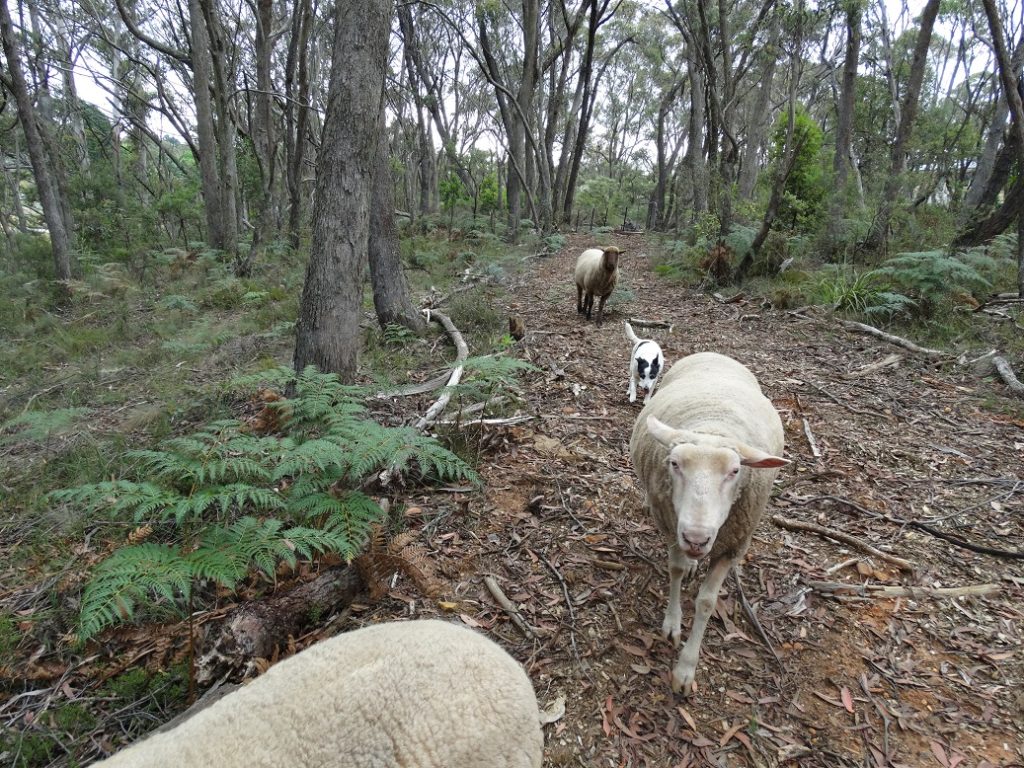

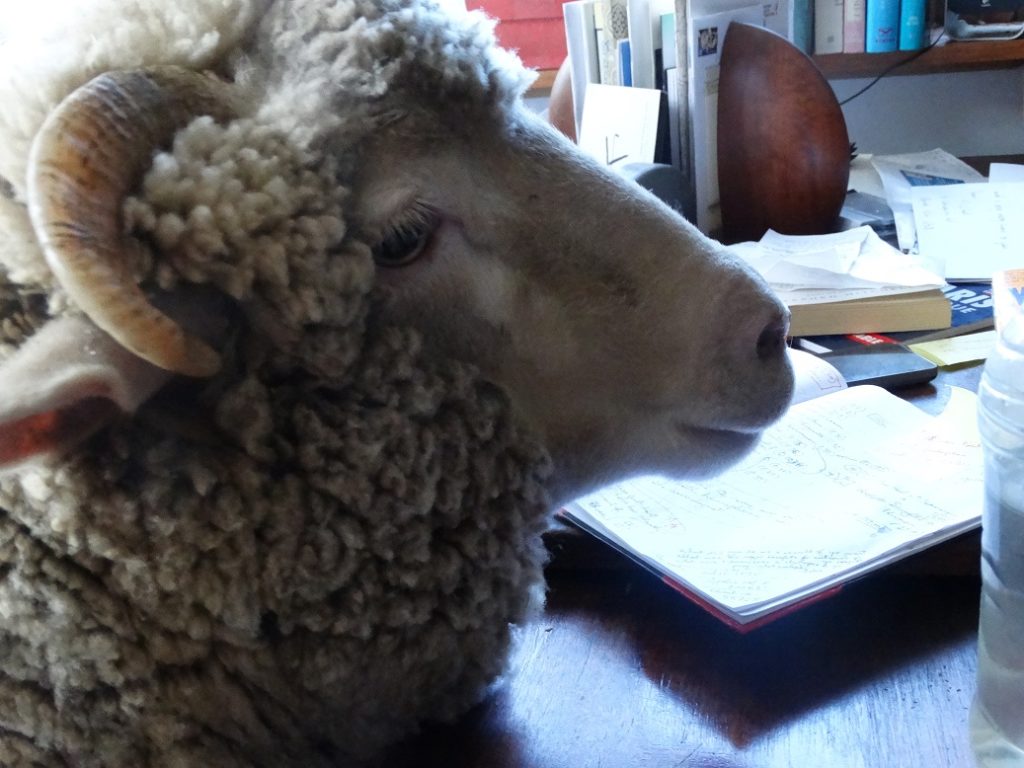
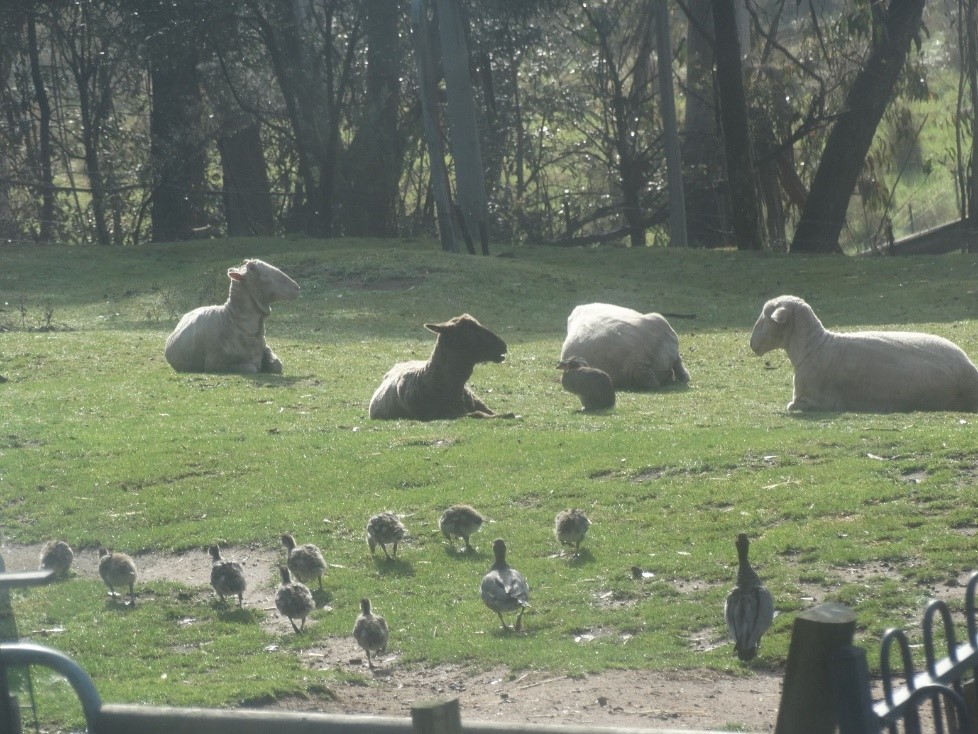
Photo credits: Andras Berkes (human animals); Author’s personal archive (nonhuman animals)
